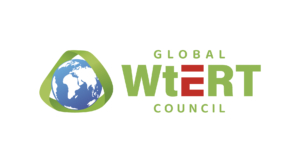M.S. Thesis: Design of Automated Materials Recovery Facility for Processing the NYC Recyclables
By A.J. Dubanowitz
Advisors: Profs. Nickolas J. Themelis and A.C. (Thanos) Bourtsalas
Department of Earth and Environmental Engineering
Fu Foundation School of Engineering & Applied Science
Columbia University
May 2000
The closure of Freshkills Landfill in Staten Island at the end of 2001 has forced the City of New York to seek alternative methods of waste management. To begin its waste diversion, the city has resorted to exporting a portion of its waste to other states. The high costs associated with waste exportation along with dramatic increases in disposal tipping fees in recent years has compelled New York City to explore potential alternative waste management options. Increased recycling provides an attractive option since it eliminates some disposal requirements with the additional benefits of reducing pollution, conserving energy, creating jobs and building more competitive manufacturing industries. In addition, through the utilization of a well-designed materials recovery facility and collection system, recycling can be a very economical waste management opportunity.
A materials recovery facility (MRF) is a place where solid wastes are delivered to be separated, processed and stored for later use as raw materials for remanufacturing and reprocessing. In the summer of 1999, the Bureau of Waste Prevention, Reuse and Recycling of the Department of Sanitation (DOS) sponsored an investigation of the technical and economic aspects of a single, city-owned MRF. The study, described in this report, examined the design and operation of a 150 tons per hour (876,000 tons per year) facility that could handle all of New York City’s recyclables. The operations within the MRF are designed to be as automated as possible to increase speed of operation, reduce costs and improve recovery. The proposed MRF would be a more cost-effective alternative compared to the currently utilized waste management system. The MRF would require approximately 16 acres of land and cost approximately $127 per ton of diverted material. This would correspond to nearly $46 million of savings for the city in waste management costs annually.
